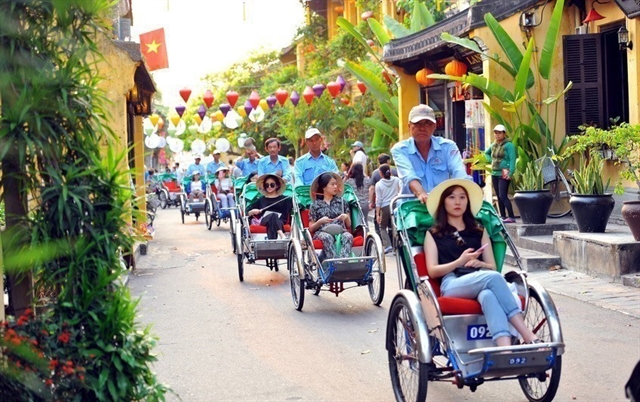 Life & Style
Life & Style

 |
| Tourists visit Hội An ancient town. On April 3, Hội An announced a proposal to enhance the control of guided tours to the ancient town, including charging tickets for all visitors and creating separate roads for locals and foreigners, which sparked significant backlash. — VNA/VNS Photo Minh Đức |
QUẢNG NAM — Hội An will not charge visitors to the ancient town until a plan has been created that has broad public acceptance, according to a senior local official.
Trần Ánh, Hội An Party Committee Secretary, stated on Saturday that he had ordered the People's Committee to hold off on a plan to collect entry charges from every tourist beginning on May 15 by establishing separate lanes for local people and international visitors.
Ánh said that Hội An would have discussions with residents and businesses to devise a solution that is both efficient and acceptable.
The local government will hold a press briefing to make public the plan once an agreement has been reached, he added.
He argued that the town would attempt to collect funds from travellers for conservation without concerning them, and that similar models are being considered for various other tourist attractions in Việt Nam and abroad.
"We will not collect entry charges from May 15 as we will not be able to come up with a plan by that time," he said.
Currently, travellers only need to purchase tickets to specific sights in Hội An, while the rest of the old town is free to explore.
One-way tickets for foreign travellers cost VNĐ120,000 (US$5.12), while those for local visitors cost only VNĐ80,000 ($3.41).
Hội An is a city in Quảng Nam Province with a population of over 120,000 people that has been designated a UNESCO World Heritage Site since 1999.
It is included in the Cù Lao Chàm-Hội An Biosphere Reserve, together with the Cù Lao Chàm archipelago, which was established in 2009.
The city's historic quarter, Hội An ancient town, is recognised as an extremely well-preserved example of a Southeast Asian commercial port dating from the 15th to the 19th centuries, with its buildings and street design showing a combination of indigenous and foreign influences.
The city's old town is notable for its covered 'Temple Bridge', which dates from the 16th to 17th centuries. — VNS




